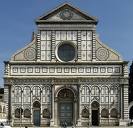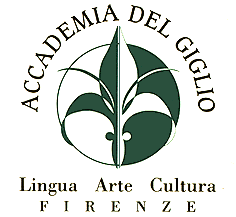 Etruscan architecture (8th century b.c. – 1st century b.c.) found primarily in Tuscany, for example in Volterra, Populonia, and Vetulonia. This architectural style is evident in tombs (houses were made of wood), arches (arches were invented by the Etruscan people), and amphitheatres.
Etruscan architecture (8th century b.c. – 1st century b.c.) found primarily in Tuscany, for example in Volterra, Populonia, and Vetulonia. This architectural style is evident in tombs (houses were made of wood), arches (arches were invented by the Etruscan people), and amphitheatres.
 Greek (8th century b.c. – 3rd century b.c.) Found in southern Italy and Sicily, for example in Agrigento or in Paestum. from Greek architecture we remember famous temples, with columns and tympanums on the façade. Of these there are three types: doric, ionic, and corinthian.
Greek (8th century b.c. – 3rd century b.c.) Found in southern Italy and Sicily, for example in Agrigento or in Paestum. from Greek architecture we remember famous temples, with columns and tympanums on the façade. Of these there are three types: doric, ionic, and corinthian.
 Roman (from 1st century b.c. to 5th century a.d.) in Italy we find the coliseum and the Roman forum in Rome. The city of Pompei, and the arena in Verona. From the Romans remain temples (the Patheon in Rome), amphitheatres, arenas, remains of walls and Roman villas, streets (as a result we get the proverb “all roads lead to Rome”) and aqueducts.
Roman (from 1st century b.c. to 5th century a.d.) in Italy we find the coliseum and the Roman forum in Rome. The city of Pompei, and the arena in Verona. From the Romans remain temples (the Patheon in Rome), amphitheatres, arenas, remains of walls and Roman villas, streets (as a result we get the proverb “all roads lead to Rome”) and aqueducts.
 Byzantine (6-7 Century a.d.) mainly in southern Italy and Ravenna. We are left churches and Basillics with magnificent mosaics, such as that of “Sant’Apollinare in Classe”.
Byzantine (6-7 Century a.d.) mainly in southern Italy and Ravenna. We are left churches and Basillics with magnificent mosaics, such as that of “Sant’Apollinare in Classe”.
 Arabian (from the 9th to the 12th century) in Sicily. For example the cloisters in Monreale, the Castle of Cuba and the church of San Cataldo in Palermo.
Arabian (from the 9th to the 12th century) in Sicily. For example the cloisters in Monreale, the Castle of Cuba and the church of San Cataldo in Palermo.
 Romanesque (11th to 12th century) in all of Italy with some regional differences. romanesque because it resembles Roman architecture, from which it takes some stylistic elements: the arch, the column, the pillars, the vault and a specific type of monumental setting and mosaics. For example: Sant’Ambrogio in Milan, the Basilic of Saint Nicholas in Bari, the church of San Miniato in Florence, the tower and Duomo of Pisa.
Romanesque (11th to 12th century) in all of Italy with some regional differences. romanesque because it resembles Roman architecture, from which it takes some stylistic elements: the arch, the column, the pillars, the vault and a specific type of monumental setting and mosaics. For example: Sant’Ambrogio in Milan, the Basilic of Saint Nicholas in Bari, the church of San Miniato in Florence, the tower and Duomo of Pisa.
 Gothic (from 12th-14th century) A style that, contrary to romanesque, looks to be more legible and express a yearning to reach God, through its use of high peaks and aisles. exemplified by such places as the Duomo in Siena, the Dukes Palace in Venice, the Duomo in Milan, and the basilic of Saint Francis of Assisi.
Gothic (from 12th-14th century) A style that, contrary to romanesque, looks to be more legible and express a yearning to reach God, through its use of high peaks and aisles. exemplified by such places as the Duomo in Siena, the Dukes Palace in Venice, the Duomo in Milan, and the basilic of Saint Francis of Assisi.
 Renaissance style ( from the 1400’s to 1500’s) this style revives classical archiecture, and its use of orders and harmonic proportions, using simple geometric forms in its design and construction. Florence is considered the birthplace of the renaissance. where one can find Brunelleshi’s church of San Lorenzo, and Leon Battista Alberti’s church of Santa Maria Novella. For the first time architects had both a first and last name. However they did not only build churches, but also hospitals, squares, villas, theatres or even entire cities.
Renaissance style ( from the 1400’s to 1500’s) this style revives classical archiecture, and its use of orders and harmonic proportions, using simple geometric forms in its design and construction. Florence is considered the birthplace of the renaissance. where one can find Brunelleshi’s church of San Lorenzo, and Leon Battista Alberti’s church of Santa Maria Novella. For the first time architects had both a first and last name. However they did not only build churches, but also hospitals, squares, villas, theatres or even entire cities.
Post translated by Alexander and Carlos. The version in Italian is here.







Commenti recenti